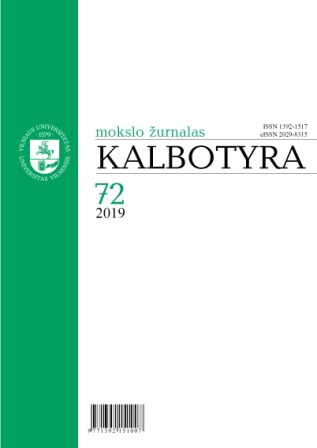Pietų aukštaičių patarmės paribiai: sintaksinių konstrukcijų kaita
From the Borderland of the Lithuanian Southern Aukštaitians: Changes in the Syntactic Constructions
Author(s): Nijolė TuomienėSubject(s): Syntax, Sociolinguistics, Western Slavic Languages, Eastern Slavic Languages, Baltic Languages
Published by: Vilniaus Universiteto Leidykla
Keywords: borderland of the dialect; the Southern Aukštaitian dialect; local variant of the Belarusian dialect; variant of the Polish language; language contacts; bilingualism; prepositional constructions;
Summary/Abstract: he dialectological and sociolinguistic material from the Southern Aukštaitian borderland is under the investigation in this article. The most recent records of the speaker of the Lithuanian Southern Aukštaitian in Šalčininkai district are analyzed in order to study the changes in the syntax. The peripheral area of the Southern Aukštaitian located in Šalčininkai district is surrounded or, speaking more precisely, in contact with languages other than Lithuanian, i. e. Belarusian and Polish, and relatively recently with the Russian language as well. The purpose of this article is to reveal the process of interception and convergence of syntactic compounds in the Lithuanian dialect of Šalčininkai district. The paper is based on ideas by Vytautas Ambrazas (2006) on this topic. Because of continuous language contact a lot of variants in the present Lithuanian dialect of Šalčininkai region have developed. For example, very frequently the prepositions ant ‘on’, dėl ‘for’, į ‘to’, po ‘after’ used in combination with case tend to acquire more specific meanings. A lot of them become analogous to those found in the neighbouring Slavic languages and thus are often alien for Lithuanian. The impact of standard Lithuanian cannot be totally disregarded either. The Lithuanian and Slavic languages are in active contact in these neighbourhoods, that is’ why they tend to develop the same patterns and constructions. In many cases the local Belarusian dialect, known as the poprostu (‘plain language’ – a local variant of the Belarusian northwestern dialect), plays a stimulating role here. Relatively recently all three contact languages, i.e. Lithuanian, Belarusian and Polish, have acquired numerous lexical and grammatical borrowings in the dialects of Šalčininkai neighborhoods. This is one of the conditions for accelerating the incorporation and adoption of alien syntactic patterns in the Lithuanian language. In intense contact, borrowing is not limited to several different patterns because syntactic rules could be adopted as well. Surely, the archaic constructions could acquire entirely new semantic content. The prepositional phrases have been adopted and used not instead of pure cases, but rather alongside with them.
Journal: Kalbotyra
- Issue Year: 2019
- Issue No: 72
- Page Range: 87-106
- Page Count: 20
- Language: Lithuanian

